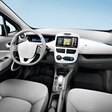
Not only electric cars, part of the future of transport in Europe are also other clean forms of transport and alternative ways of their use. Multi-modal transport requires not only new technological solutions, but also a different thinking by providers and users. But electric cars are an important step on that path to the future.
Electric Vehicles (EVs) and Plug-in Electric Vehicles (PHEVs) are but two examples of the various new technologies in traffic, but they are surely the most widely-recognized (leaving aside autonomous vehicles). The sales of EVs and PHEVSs are growing, but mainly in countries which have incentive programs in place, either subsidies or tax breaks. Should the EU be more involved in encouraging member states to promote EV and PHEV sales? How could this be done?
The EU is already deeply involved in the promotion of clean fuels vehicles in Europe, and the importance of the electrification and decarbonization of road transport has been highlighted again in the recent Energy Union communication. In 2013, the Commission adopted a Clean Power for Transport Strategy, to tackle the transport dependency on oil, and reinforce the competitiveness of the European industry. This strategy includes a directive on the deployment of alternative fuel infrastructures, adopted in October 2014, which maps out a clear future for clean transport across Europe. It is a major innovation, and a milestone en route to meeting our commitment to reduce European transport's overdependence on oil, mitigating the environmental impact of transport, and developing a transport system fit for the 21st century.
The directive requires member states to adopt national rules for the market development of alternative fuels, including the necessary infrastructures to maintain them. It is up to member states to ensure that an appropriate number of easily-accessible electric recharging points are up and running by 2020. The goal is to have electric vehicles circulating in urban, suburban and other densely populated areas by that time. I believe that, with the policy framework, we defined the conditions as they exist now, to trigger the necessary private investment in electro-mobility, for both vehicles and infrastructures. EU companies are world leaders in developing such technologies. A stable framework and clear political objectives give them a strong incentive to keep investing and innovating. A very nice »side effect« of this process is that, at the same time, they would create growth and jobs for Europe. On the other side of the equation, customers will be able to buy electric vehicles, because they know they'll be able to drive them without any logistical problems.

"It is important that countries allow testing of autonomuos vehicles."
In general, do you think subsidies are the best way to encourage sales, or are tax breaks better solution? Do you think incentives should be limited, be it by car price (not subsidizing luxury EVs over a certain price, for example), or by buyer type, for example, private sales vs fleet sales?
Direct subsidies for vehicles can help trigger their market introduction, only if combined with the right regulatory framework. Incentives are certainly desirable, but can also have negative external effects, if they are not limited in time, and they should effectively lead to more affordable prices for battery and plug-in electric vehicles (BEV and PHEV). It is indeed mandatory to create a favorable environment for EVs that take into account mobility needs and cultures. Other useful incentives to trigger market uptake, with no extra expenditure for local authorities, are access to bus lanes, road toll exemption, and access to free parking in all publicly-owned parking spaces, as well as EV-reserved parking spaces. As for infrastructures, reducing administrative burden for their development or set up can also be very helpful.
While EVs are not producing emissions locally, their true ecological value is heavily dependent on the method of production of electric energy. How can the push for EV car sales and use go together with the fact that clean energy production is not as well-planned in some countries?
As I said, the need for the electrification and decarbonization of the transport sector has been strongly stressed in the recent Energy Union Package, especially for road and rail transport. It is, therefore, very important that we continue investing in finding low carbon solutions to electricity production. Member states have renewable energy targets to reach, the famous 20-20-20 by 2020 package, adopted in 2008. It seems that the strategy is working out: the share of electricity generation from renewable energy sources is projected to go up from 20% in 2010 to about 43% by 2030 and 50% by 2050. In this context, extending electricity use in the transport sector will be feasible. Wherever renewable energy does not reach, we'll need to find the proper energy mix, and make a lot of effort in energy efficiency.
Car manufacturers are proceeding quite cautiously, first developing and selling EVs and PHEVs in higher price ranges, as they risk less that way. Does the EU have a way to start "convincing" them to develop and produce more affordable EVs and PHEVs?
Gradually tightening CO2 emissions standards for passenger cars and vans has proven to be a very effective way of driving energy-efficiency improvements and, at the same time, providing the industry with planning certainty for investments. The Energy Union Package clearly communicates the need for a continued focus on tightening CO2 emission standards for passenger cars and vans post-2020, and on measures to increase fuel efficiency and reduce CO2 emissions for heavy duty vehicles and buses. Indeed, it is the role of the industry to offer to customers a wide range of models at affordable prices.
Charging infrastructure is one of main factors to encourage the widespread use of EVs. The EU has only recently made standards for EV charging plugs, then changed them. Why so late and why changes (adding Chademo)?
In fact, the commission delivered a mandate to the European Standardization Organizations (ESOs) to issue standards for EV charging plugs back in 2010. However, despite the recommendations that resulted from that process, no consensus was reached on a single interface.
Further policy action was, therefore, needed, and it became a rather urgent matter, as our strategy relies on private investments, and only a stable and certain legal framework can mobilize private investments.
The solution in the directive on alternative fuels infrastructure was to pursue a common plug for Europe, without imposing a unique standard. To avoid penalizing early movers, be they users of vehicles in France with Type 3 connectors for normal power recharging, or users of Japanese EVs with DC high power Chademo connectors, and the corresponding recharging infrastructure providers, the commission decided to allow:
- a transition period of 36 months, after which new or renewed recharging points must be equipped with Type 2 for normal power recharging and Combo 2 for high power recharging;
- the coexistence of other standards (i.e. Type 3 for normal power and Chademo for high power recharging) after that transition period, notably through multi-standard recharging points, until the end of their lifespan.

"A stable framework and clearly defined political objectives are a powerful incentive."
There are many problematic tripwires on the way to developing a suitable charging infrastructure. One of them is the standardization of identification and billing methods, another is "roaming" possibilities. We can, I think, expect these problems to be naturally solved by providers, but experience from the development of mobile networks also shows clear warnings that letting that happen may not be in the best interest of consumers. Are there any plans to regulate and standardize this area, to avoid unnecessary charges to consumers (similar to roaming charges in mobile networks, for example)?
To create economies of scale and allow EU-wide electro-mobility, besides the necessary infrastructures, it is very important to support the deployment of an Electro Mobility E-Market, to make charging points and payment systems interoperable. Furthermore, we need a common EU framework for policies, software architecture, and common standards.
Developing charging networks (and supporting electrical grids) and the development of hydrogen networks (for hydrogen EVs) takes time and investments. What are the tools that the EU can use to push countries, communities and business forward in this area?
For electricity, besides common standards for the plug and minimum requirements for the infrastructure coverage, the directive on alternative fuels infrastructure requires member states to make sure that operators can sell electricity from any supplier they choose, so the market can play its role. Also, in order to avoid unmanageable impact to the grid, the recharging of electric vehicles should, if technically and financially reasonable, make use of intelligent metering systems, in order to contribute to the stability of the electricity system, by recharging batteries from the grid at times of low general electricity demand, and to allow secure and flexible data handling. In the long term, this may also enable electric vehicles to feed power from the batteries back into the grid, at times of high general electricity demand, creating interesting business models for potential investors.
For those member states that choose to develop hydrogen as a transport fuel, an appropriate number of refueling points must be put in place by the end of 2025. Furthermore, the Commission is one of the three partners in the Hydrogen and Fuel Cells Joint Undertaking (HYPERLINK »http://www.fch-ju.eu/«http://www.fch-ju.eu/), together with the industry and the research community. The FCH-JU II supports demonstration and research and innovation projects for hydrogen, a maturing technology, in both the energy and transport sectors.
Development of the charging infrastructure is also an opportunity to connect to other modes of transport, right from the beginning, using the same system not only for charging and billing, but also as payment methods for other modes of transport. How will you ensure that this opportunity does not go unaddressed?
One of the ways towards a better multi-modal integration is to provide people with complete and reliable information about how to go from A to B, and what type of services they can use, for example electro-mobility services. Later this year, we will present a proposal for fair and equal access to multimodal travel and traffic data, so more comprehensive services can be developed.
Booking and payment is the next logical step, after information and planning. However, for the time being, we are focusing our efforts on fostering the interoperability of various ticketing schemes. This is already a crucial first milestone, also on the way to integrated ticketing.
Finally, car sharing (EV sharing) could also be a different way to massively use EVs, but it takes quite a change in people's mindset, before seeing the results.
A current alternative (or incarnation) of car sharing is the taxi service. There are new players in this area (Uber and its competitors), but it seems that they are sometimes privileged, in comparison with classical taxi services. Each country is currently solving this in their own way. Shouldn't the EU be a leader in this area, and try to set some minimum standards for anyone engaged in the commercial transport of passengers, thus ensuring a level playing field for all services?
I am a supporter of new and innovative mobility services, especially with the purpose of increasing transparency and choice and reducing costs for consumers. However, it is important that these new services respect EU and national legislations, as much as member states should respect the general principles of EU law, such as proportionality, non-discrimination and freedom of establishment, when applying their national provisions.
The taxi services sector is typically highly-regulated and, at the moment, falls under the competence of the EU Member States. The issues raised are quite complex, and certainly require, and deserve, a long analysis. We are monitoring the matter, the market changes as well as specific complaints.
What about self-driving cars, which are already being tested in some EU countries? Again, different member states have different demands, and that could be a big obstacle to the widespread adoption of autonomous vehicles. Will each country have its own rules in this area, or will there be a set of standardized technical rules and specifications, as is the case with regular vehicles?
It is important that countries can test these types of vehicles. Besides the technological questions, those vehicles raise many other issues, such as public acceptance, liability, and data protection. Experiments in member states will help to understand these issues, and to formulate possible ways forward. But cars do not stop at borders and, in order to make mobility easier, it is equally important to have common standards and technical specifications throughout the EU. We'll have to make sure that the knowledge gathered by those states is used to build a common framework. The future of automation will be defined both at member state and EU levels.
"Later this year we will present a plan for fair and reasonable access to multi-modal travel."
There's also a matter of liabilities and similar legal problems. Should these also be addressed at EU level?
The Vienna Convention on Road Traffic says that every vehicle shall have a driver. However the convention is in a process of evolving, in order to make legal the use of self-driving cars.
Besides that, many other legal and liability issues need to be addressed. In this respect, the commission is working together with the industry and the member states to ensure a coherent deployment of the cooperative/connected system, a prerequisite for the self-driving cars. These cooperative systems allow all kinds of vehicles, driverless or not, to communicate with each other (V2V). For example, if a car breaks down on the road, the connected cars will receive the information and be advised to slow down, switch lanes or take an alternative route.
The Commission plans to introduce, next year, a roadmap for this cooperative system, to ensure a coherent deployment across the EU. In this roadmap, we will tackle all the issues related to self-driving cars, such as liability, data protection, standardization, etc.
How is the EU working to educate and guide consumers in this area? Should this education begin even before they start to become buyers and users?
In terms of direct actions, with the commission's European Mobility Week, an annual campaign on sustainable urban mobility, encourages local authorities to introduce and promote sustainable transport measures, and to invite their citizens to try out alternatives to cars. Alternative fuels are part of the solution, along with a switch towards public transport, walking and cycling, and innovative solutions, such as car-sharing and pooling.
However, the European Commission has the role of proposing common legislative frameworks, methodologies and solutions, and to share all this information with member states, and regional and local authorities.
Back to passenger cars: the EU has made a big push to clearly display the energy efficiency of cars. But it seems it was a mostly bureaucratic exercise, as standards are old, and have no connection with real use, and the results are displayed in such a way that is not easily understandable to the general public. When can we expect results that will be easy to understand and comparable with real-life use?
A new test cycle, called the World Light Vehicle Test Procedure (WLTP), is under development, and is foreseen to be first enforced in 2017. This cycle will reflect better real-world driving conditions. It will measure CO2 emissions and fuel economies of new vehicles in a more accurate way than the current New European Drive Cycle (NEDC) test. The results of the WLTP test will serve to monitor the annual progress of car manufacturers in reducing car emissions to meet the EU target. At this point in time, no update is foreseen for the CO2 labelling.
Would you buy an EV (or PHEV), if you were to buy a car today?
Usually I use my bicycle, but when I recently chose the commission's corporate car, I opted for a hybrid vehicle, in order to have low CO₂ and pollutant emissions, and be able to travel long distances.




